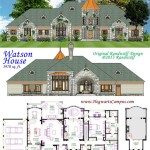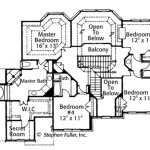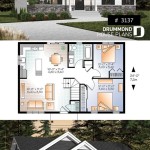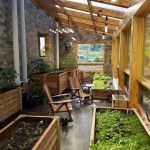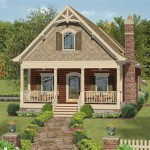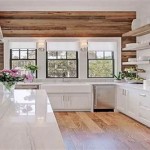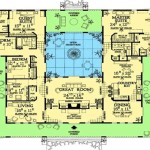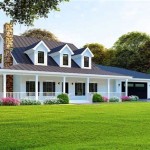House Plans Over 10000 Sq Feet: Considerations for Grand-Scale Living
The prospect of designing and constructing a house plan exceeding 10,000 square feet represents a significant undertaking. Such a project transcends the realm of typical residential construction and ventures into the territory of estate planning and bespoke architectural design. Numerous factors must be considered, ranging from budget and land availability to lifestyle requirements and long-term maintenance. This article will explore the multifaceted aspects involved in developing house plans for properties of this magnitude.
Initially, it's critical to understand the sheer scale of a 10,000+ square foot residence. This is not simply a larger version of a standard home; it necessitates a fundamentally different approach to design and execution. The internal spaces, exterior aesthetics, and overall functionality require careful consideration to ensure a cohesive and livable environment. One must consider the purpose of the space. Will it function as a multi-generational family home, a venue for extensive entertaining, or a showcase for art and collections?
Preliminary Planning: Defining Scope and Budget
The initial planning phases are arguably the most critical. This stage involves defining the scope of the project and establishing a realistic budget. Without a clear understanding of these fundamental parameters, the project can quickly derail, leading to cost overruns and design compromises. The budget should encompass not only the construction costs but also the associated expenses, such as architectural fees, engineering fees, landscaping, interior design, and permit acquisition.
Accurately estimating the cost of such a large-scale project requires a thorough understanding of current market conditions, material costs, and labor rates. Engaging a quantity surveyor or a cost estimator early in the process can provide valuable insights into potential costs and help to refine the budget accordingly. Furthermore, it's essential to factor in a contingency fund to account for unforeseen expenses or changes in design during the construction phase.
Beyond the hard costs of construction, consider the ongoing operational expenses. A house of this size will inherently require significantly higher utility bills, property taxes, and maintenance costs. Factoring these long-term expenses into the initial planning stage can help to avoid financial strain in the future. For example, energy-efficient design features, such as solar panels and geothermal heating, can significantly reduce long-term energy consumption but represent an upfront investment.
The selection of the building site is also paramount during this planning phase. Factors such as zoning regulations, soil conditions, environmental restrictions, and accessibility must be carefully evaluated. A detailed site analysis should be conducted to assess the suitability of the land for the intended construction. This analysis may involve topographical surveys, geotechnical investigations, and environmental impact assessments. The building's orientation on the land, taking into account sunlight, prevailing winds, and views, requires careful consideration to maximize energy efficiency and enhance the living experience.
Architectural Design Considerations: Functionality and Aesthetics
Once the initial planning phase is complete, the focus shifts to architectural design. It’s advisable to work with experienced architects specializing in large-scale residential projects. These professionals possess the expertise to translate the client's vision into a functional and aesthetically pleasing design. The architectural plans should meticulously detail every aspect of the house, including the floor plan, elevations, sections, and construction specifications.
The floor plan is the foundation of the design. It should prioritize functionality and flow, creating a comfortable and livable environment. Consider the various zones within the house, such as the living areas, sleeping areas, recreational spaces, and service areas. Ensure that these zones are logically arranged and that there is ample circulation space to avoid congestion. The layout should also take into account the needs of all occupants, including family members, guests, and staff. Multi-generational living arrangements might require dedicated wings or separate living quarters.
The aesthetics of the house should complement the surrounding environment and reflect the client's personal style. The architectural style should be carefully considered, ranging from traditional styles such as Georgian or Victorian to more contemporary designs. The selection of materials, finishes, and colors should be consistent with the overall aesthetic vision. Furthermore, the exterior design should integrate seamlessly with the landscape, creating a harmonious relationship between the house and its surroundings.
Natural light is a crucial element of any successful house design. Maximizing the amount of natural light within the house can enhance the living experience and reduce the need for artificial lighting. Large windows, skylights, and strategically placed openings can bring natural light into the interior spaces. The orientation of the house should also be considered to maximize sunlight exposure during the day. However, it's important to balance natural light with privacy and energy efficiency. Window coverings and shading devices can be used to control the amount of sunlight entering the house and to prevent overheating.
In the context of a large house, accessibility should be a primary concern. Ensuring that the house is accessible to people of all abilities is not only a matter of compliance but also a matter of creating a welcoming and inclusive environment. Features such as ramps, elevators, and wide doorways can improve accessibility for people with mobility impairments. Universal design principles should be incorporated throughout the design to create a house that is usable by everyone, regardless of their age or abilities.
Interior Design and Finishes: Creating Cohesive Spaces
Interior design plays a critical role in transforming a house plan into a home. The interior design should complement the architectural design and reflect the client's personal style. The selection of furniture, fixtures, and finishes should be carefully considered to create a cohesive and harmonious environment. The interior spaces should be functional, comfortable, and aesthetically pleasing.
The scale of a 10,000+ square foot house demands careful consideration of the proportions and dimensions of the interior spaces. Furniture and accessories should be appropriately sized to avoid overwhelming or underwhelmed the spaces. The use of color, texture, and lighting can create visual interest and define the different zones within the house. Custom millwork, such as built-in cabinets and shelving, can add a touch of elegance and functionality. High-quality materials and finishes can enhance the overall aesthetic and durability of the interior spaces.
Lighting is a crucial element of interior design. Properly designed lighting can enhance the ambiance of the house and create a comfortable and inviting atmosphere. A combination of ambient, task, and accent lighting should be used to illuminate the interior spaces. Ambient lighting provides overall illumination, while task lighting is used for specific activities, such as reading or cooking. Accent lighting is used to highlight architectural features or artwork. Smart lighting systems can be used to control the lighting levels and create different moods.
Technology integration should be seamlessly incorporated into the interior design. Smart home systems can control various aspects of the house, such as lighting, heating, security, and entertainment. These systems can be controlled remotely via a smartphone or tablet. Wireless networks and data cabling should be strategically placed throughout the house to ensure reliable connectivity. Home theater systems, audio systems, and security systems should be integrated into the overall design.
The selection of appliances and fixtures is an important aspect of interior design. High-end appliances and fixtures can enhance the functionality and aesthetic appeal of the kitchen and bathrooms. Energy-efficient appliances can reduce energy consumption and lower utility bills. Smart appliances can be controlled remotely and provide valuable insights into energy usage. The selection of plumbing fixtures, such as faucets, showers, and toilets, should be based on both aesthetic and functional considerations.
Artwork and accessories can add a personal touch to the interior spaces. Carefully selected artwork can enhance the aesthetic appeal of the house and reflect the client's personal taste. Accessories, such as rugs, cushions, and lamps, can add warmth and texture to the interior spaces. The placement of artwork and accessories should be carefully considered to create a balanced and harmonious composition.
Constructing a house plan over 10,000 square feet involves meticulous planning, collaboration with skilled professionals, and a keen understanding of the client's vision. From defining the project's scope and budget to considering architectural design and interior finishes, each stage demands careful attention to detail to create a grand-scale living space that seamlessly blends functionality, aesthetics, and personal style. The resulting property becomes more than just a house; it transforms into a custom-tailored sanctuary that caters to the unique lifestyle and preferences of its inhabitants.

One Story Floor Plan Single House Plans Large Mansion

Modern House Plans 10000 Plus Square Feet

Floor Plans 7 501 Sq Ft To 10 000 House Mansion Plan

Floor Plan Main Is 6900sq Ft 10 000 Sq Dream House Plans Vancouver Toronto Ca Single Story Large Mansion

Modern House Plans 10000 Plus Square Feet

Large 6 Bedroom Bungalow 10000 Sf One Y Dream House Plans Designs Floor

U10612r House Plans Over 700 Proven Home Designs By Korel

Floor Plans 6001 10000 Square Feet

Modern House Plans 10000 Plus Square Feet

Over 10 000 Square Foot House Plans With Photos Luxury Mansion

